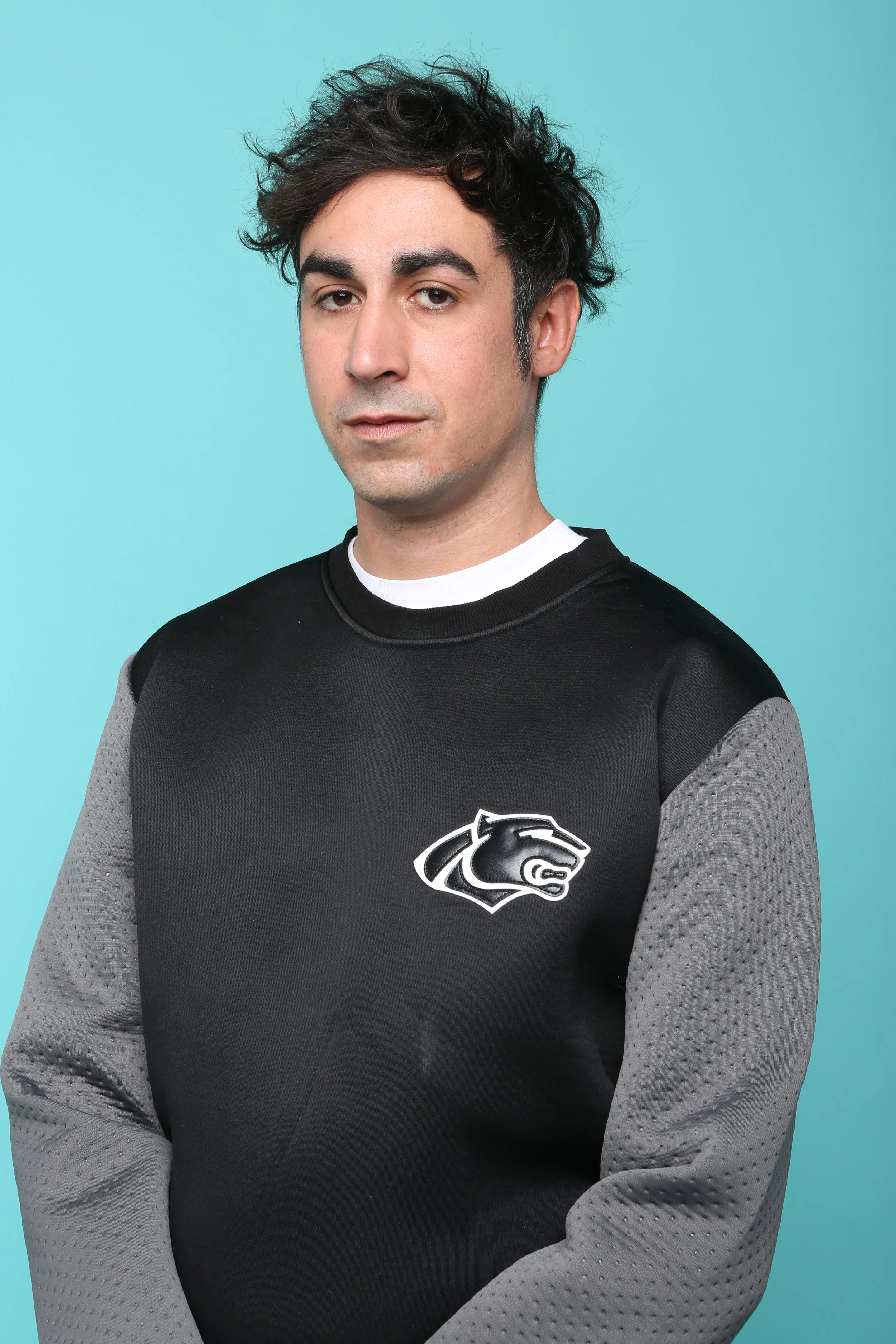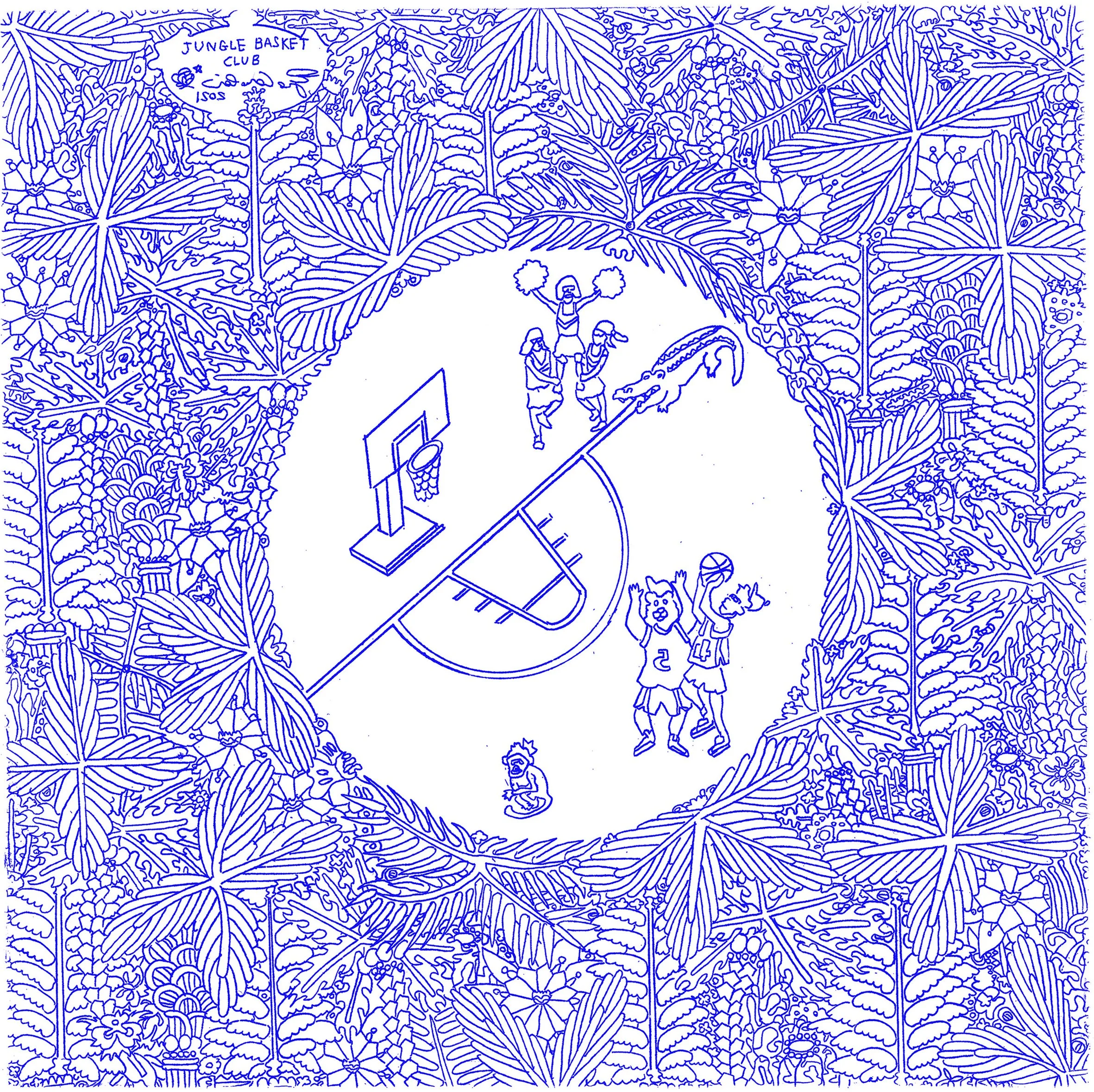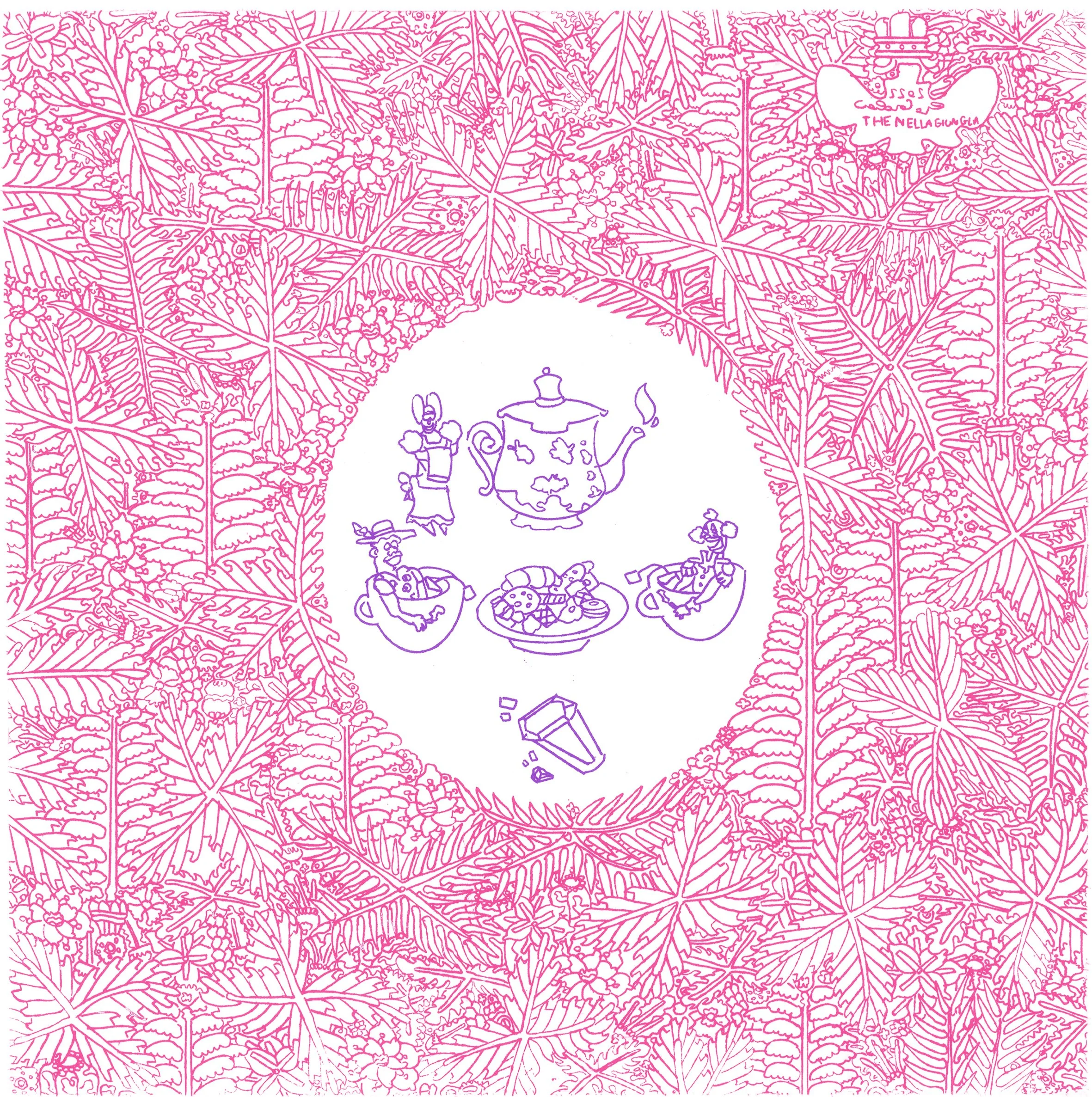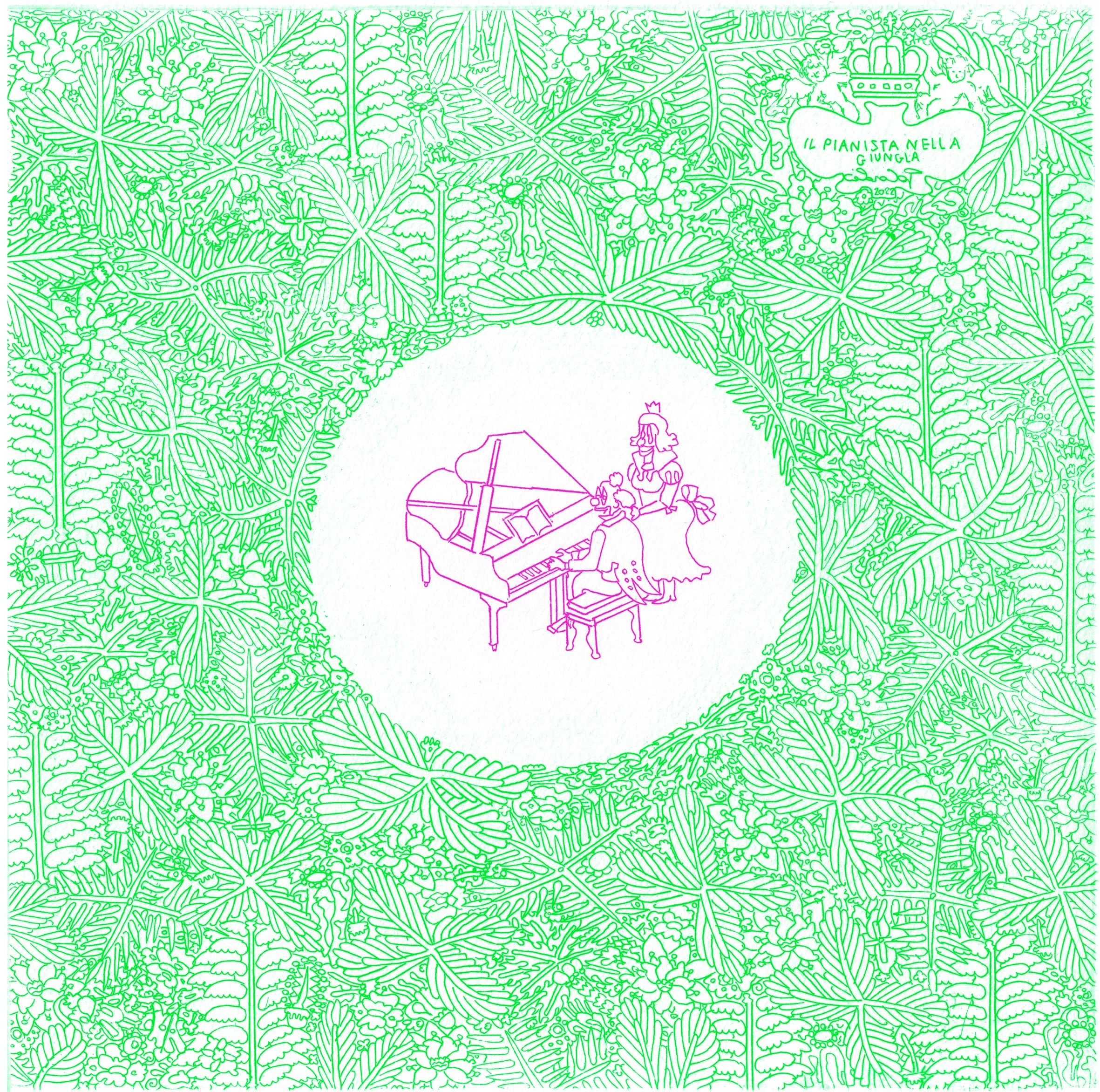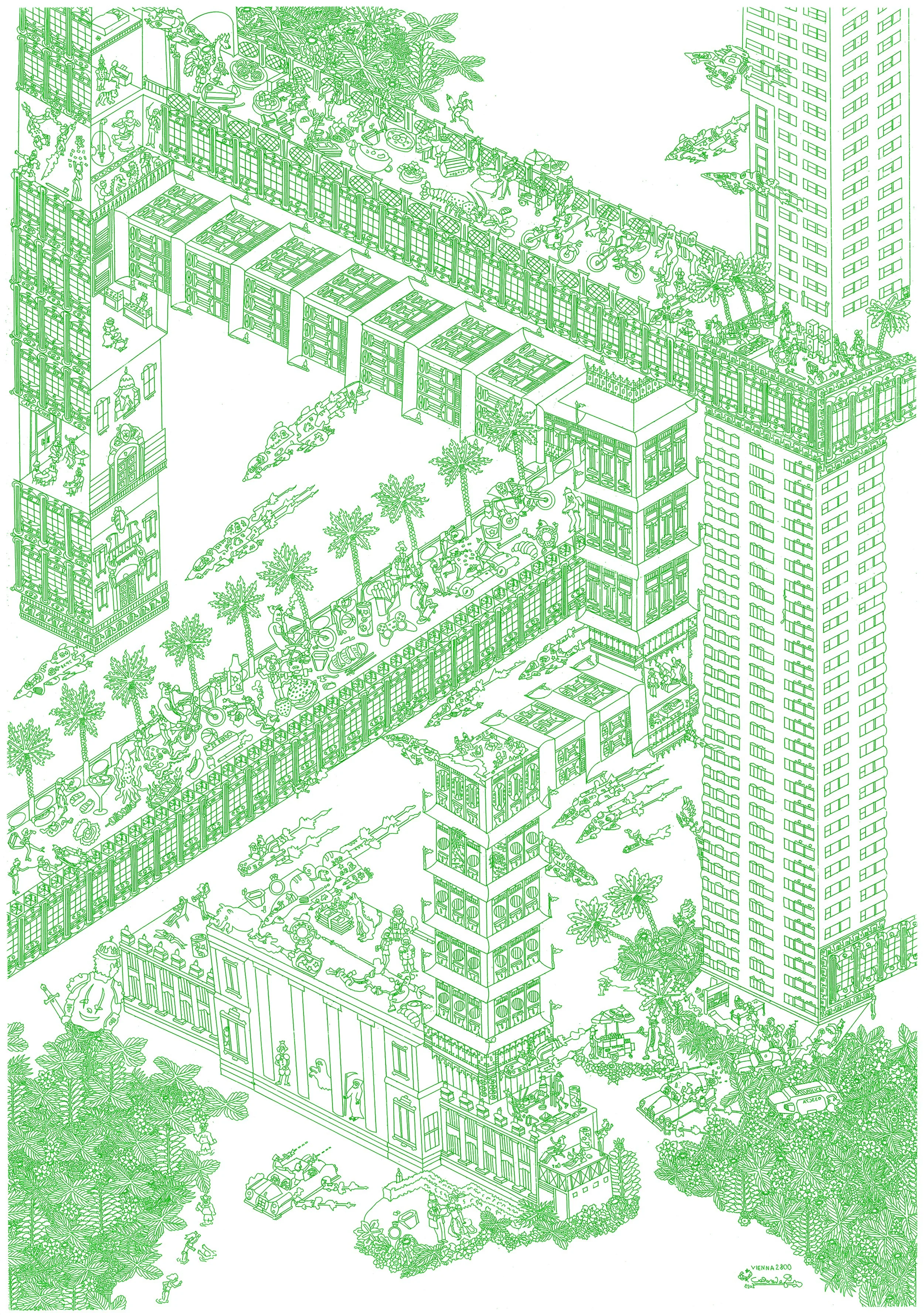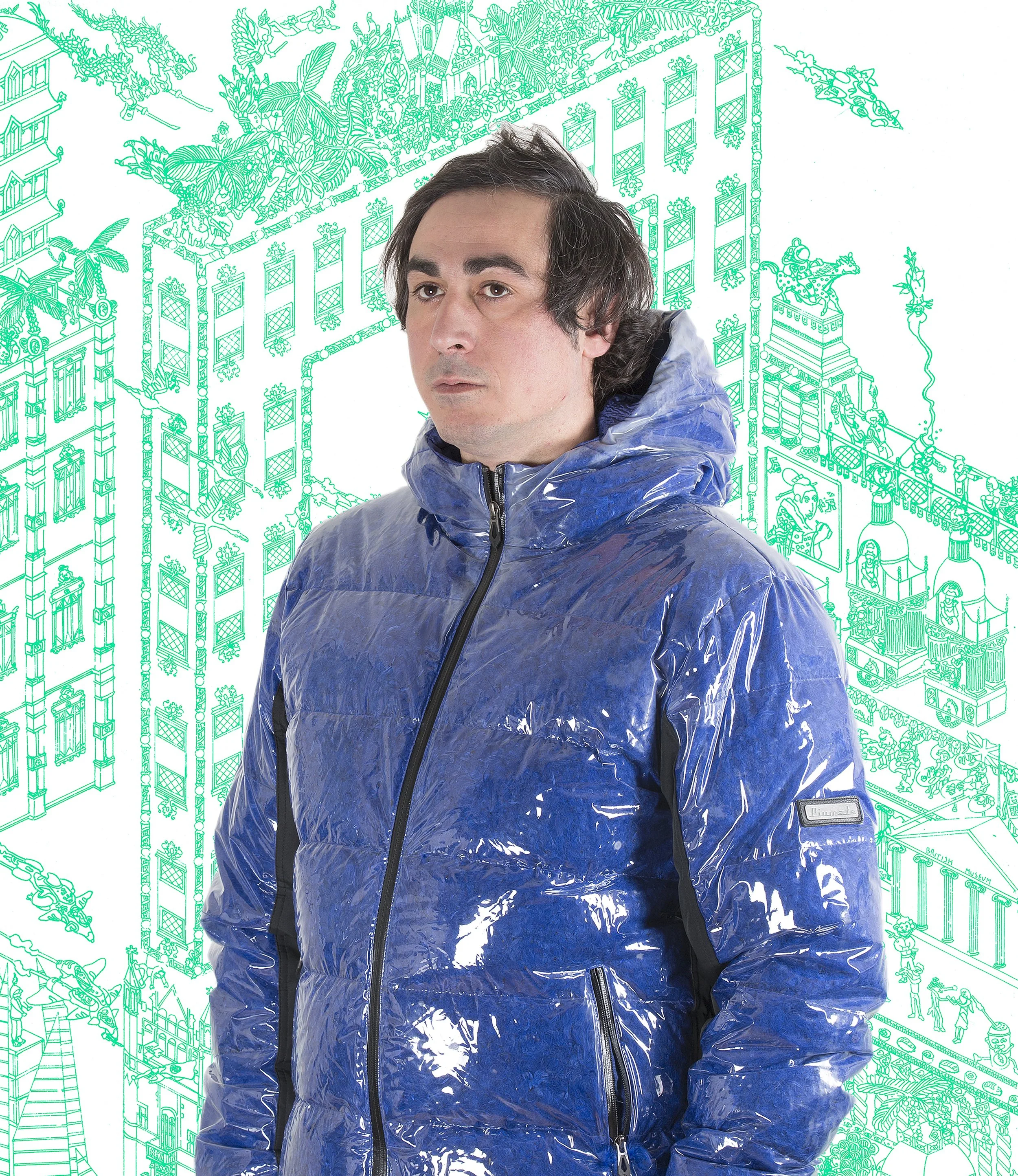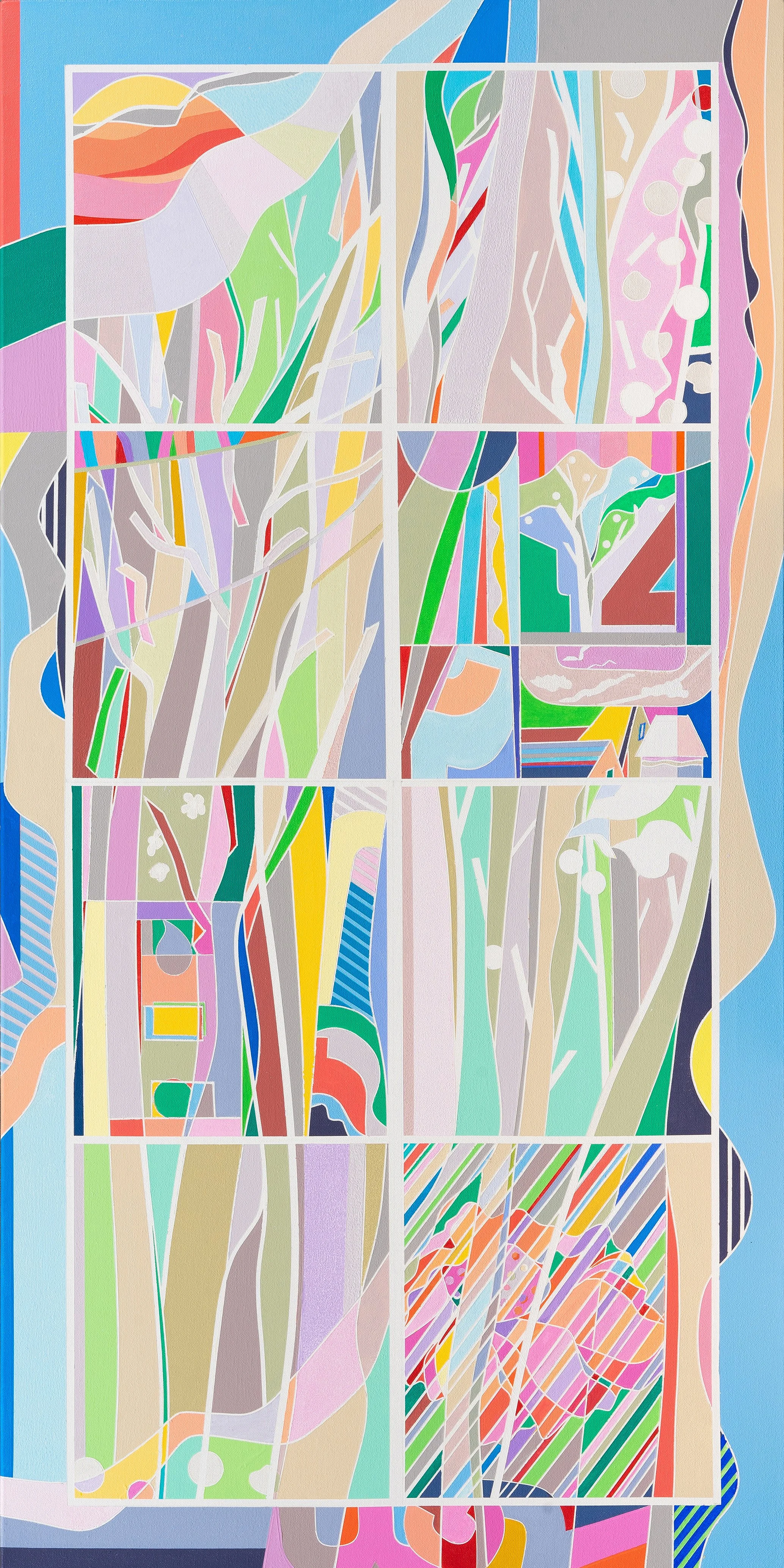Interview with Francesco Casolari
From your early days engraving medieval and Parisian scenes to the intricate, futuristic cityscapes populated with fictional characters, your artistic trajectory has been quite diverse. Could you elaborate on the formative influences during your adolescence that prompted the shift in your thematic focus when you resumed your art at 19, and how do you reconcile these influences with your current artistic priorities?
If as a child I had a classical education based on the study of the piano, engraving and visits to museums in Italy and Europe, in adolescence there were the first encounters with contemporary culture. I was greatly influenced by the French and Italian underground comics of the 80s and 90s. I am talking about magazines like Métal Hurlant by the artists Jean Giraud and Philippe Druillet together with the writer and journalist Jean-Pierre Dionnet. The comic “La Casta dei Meta-Baroni” by Alejandro Jodorowsky and the Argentinean artist Juan Giménez. The underground magazine “Frigidaire” with cartoonists like Andrea Pazienza and Tanino Liberatore with Ranxerox. Fundamental was all the production of Enki Bilal and Corto Maltese by Hugo Pratt, but also Katsuhiro Otomo with “Akira” and “Metropolis”, or even artists like Eboy. Immediately after high school, my friends and I opened our first accessories and graphics company, “Bloodyfrog”, in a basement in the center of Bologna. The first years of university were characterized by intense work and research, social media and Youtube did not exist yet, we tried to learn about fashion publishing and fanzines. We were very interested in figures like Pharrell Williams and Nigo of Bape, in the early 2000s Bape was considered the coolest brand in Italy, we were very interested in its production world. We had noticed that prominent figures in the world of streetwear and hip hop had created an intense cultural exchange between Tokyo and the East Coast of the United States, we were attentive to all the details of this cultural phenomenon. These were my influences at 19 and in the first years that followed and I think they have remained identical in my current artistic priorities.
In the context of your dual academic background in architecture and fashion design, how do these fields inform and enrich your visual storytelling? Could you describe a specific work where architectural principles and fashion aesthetics intersect uniquely, illustrating the dialogue between form, function, and fantasy in your creations?
Certainly the studies in architecture and fashion design were the most formative that I had, but in reality my university path was much broader. I started university at 19, not having clear ideas on what to study, I studied a bit of everything: 6 months of agriculture in Bologna, 6 months of interior design in Rome, 4 years of architecture in Ferrara, 6 years of fashion design in Treviso, 4 years of visual arts in Bologna and 1 year of master's degree in psychology, pedagogy, sociology and anthropology. At the end of these studies I obtained two university degrees and 1 master's degree, I was enrolled in university for 16 years, I must have taken more than 100 university exams. As soon as I finished high school I was lucky enough to start working as an artist with Galleries and Museums, in the meantime I studied. All these different studies in various fields gave me a solid culture, then the hand and the desire to transform these cultural experiences into a sign, brought so much flavor and taste to my works. I imagine scenes or facts, I do historical research on some topics or architectural forms. I have tried to convey cultural concepts such as sociology and urban planning in my works. The Fashion Design faculty at IUAV gave me a lot of method and allowed me to deepen my cultural studies on the world of fashion, I met very good professors, it is certainly one of the best among Italian universities. It is also a very practical university, for 6 years I was a tailor, the pace was heavy and tight, it taught me discipline and the formal aspect of work. When I finished fashion design, my head was set to handle tough work paces and I transported this desire and method into my work as an artist. I think that the work that best represents the meeting between architecture and fashion, between form, function and fantasy is “Toronto 2800”, I find it a very complete and beautiful work.
Your art masterfully weaves together elements of European architectural heritage with futuristic, steam punk visions. What are the challenges and advantages of fusing such disparate temporal and stylistic elements, and what do you aim to communicate through this synthesis about the relationship between past and future?
Surely those who move in European cities develop an innate feeling of love and culture for architectural styles and monuments. The historic centers of European cities span various historical eras, every day a European is confronted with the history of architecture. In Italy this issue is even more evident, already 2000 years ago Rome was a cosmopolitan and advanced city of millions of people, and all 100 Italian cities were already present and prolific. If one reads medieval history books, one realizes how rich and complex Italy and Europe were, all the economic, political and cultural sectors were already very advanced, my city Bologna has the entire historic center of the medieval era completely intact. We are in 2024, we always talk about the future and technology, but here in Italy you live immersed in the past in a timeless situation, or rather where the future and the ancient coexist. You can find a frescoed palace with LED screens in its rooms or electric cars in a 15th-century square. The present is like water flowing on a slab of black marble that represents our past, everything changes so that nothing changes. In Italy it seems to be an advanced country, but very ancient concepts and landscapes still coexist, it seems to be suspended in time, in eternity. We have the most modern technologies but everything seems still, we are the nation of the Pope, of the Church, everything is suspended between past and future. A nation similar to Italy is Japan, where the most advanced future and very ancient traditions coexist, Italy and Japan are two cultural islands, for this reason they attract so many tourists every year. My works are the children of my cultural environment and my territory, they visually transmit what I experience every day.
Characters such as clowns, dames, and other fantastical beings frequently inhabit your urban landscapes, each adding layers of narrative depth. Could you discuss the process of character development in your work and how these figures metaphorically represent or challenge societal norms and historical epochs within the frame of your imagined cities?
I am pleased that you have noticed the characters in my etchings. My etchings are actually large-format urban scenarios, but there is great attention to all the details, everything is studied to the millimeter, and great attention is also given to the characters who inhabit the city. Having studied the history of costume and fashion, I am very interested in the development of clothing over the centuries, both European and other parts of the world. There is a philological and historical research before developing a character. Many characters are recurring in my etchings, some evolve and in each work new ones are always added. The city and the metropolis have always been places of social variety, I want to show in my urban environments the concept of inclusiveness and peaceful coexistence between the various social categories and urban subcultures. In my cities, masses and groups of people move, each character stereotypes a personality: both from the clothing, from the accessories to the activity they perform and the gestural attitude. My characters are 2-3 centimeters tall, so to account for these details you really need a magnifying glass, but while I do them, these are all things and information that I take into account. In recent years I have also started to do digital illustrations where I bring my characters to a larger scale, they are usually 40-80cm works, they are like a focus on the possible inhabitants of my cities. I also do cartoon portraits of my collectors and develop watercolors where I insert my characters into domestic environments or urban views. I thought I was a landscape painter and perhaps it is my main characteristic, but over the years I have also managed to develop the human figure. My first approach to the human figure occurred during the years of studying fashion design, there was the fashion illustration course, I threw myself into it. I enjoyed the fashion illustration course, I learned to have my own sense of color while drawing and a coherent approach to the composition of the figure I was drawing; at the end of the course I found myself capable of tackling this new type of drawing. Obviously the world of comics, science fiction cinema, cartoons and other illustrators inspire me and I am always looking for inspiration, but I want my characters, like all my artistic production, to be highly original, processes of creation never seen before.
The meticulous detail and sheer scale of your large etchings require significant dedication and labor. Can you walk us through the planning and execution stages of one of these major works, particularly how you sustain artistic focus and physical precision over the months it takes to complete an etching?
I work with many Galleries and Museums, but all my etchings have been produced for many years by a single Gallery and printing house: Milano Printmakers. Milano Printmakers is a center dedicated to contemporary engraving in Milan, a very large center equipped with all the machinery and tools to tackle engraving in all its disciplines, both classical and experimental. All my plates are prepared by them by hand with a special wax, and once I have engraved the entire plate, both the acid etching and the printing are always followed by them. It is a very long and completely artisanal process, using extremely high quality German sheets. The printed etching is therefore a completely handmade product that is the result of hundreds of hours of work, effort and dedication. I interpret the etching technique in a classical way, without additional complementary techniques, just like in 1400 when this technique was born, more than 600 years ago. One of my large format engravings requires 1300 work hours to be able to engrave the entire surface of the plate, it takes 8-10 months of work. Luckily I have no creative blocks, engraving is an activity that I started as a child, at 6 years old, and it comes very naturally to me. To make the entire 8-10 months of work and maintain artistic concentration and physical precision, I have adapted my lifestyle to my activity. When I wake up I go out and have a big breakfast at the pastry shop, and then I work until lunch. After lunch I rest for 1-2 hours and work until 5pm. At 5pm I go out and go to the bar and take a break, then I get back on track until dinner. I have dinner and if there are things to do I also work in the evening, I always try to sleep many hours. I draw with ambient music or even in silence, my studio is very quiet and the natural light is very good, so as not to strain my eyes, since it is a job with a precision of a third of a millimeter, I always check the quality of the light before starting to engrave. When my eyes are tired I stop. I engrave 3-4 hours a day all year round, except when I am on holiday or in the summer, because in this period the heat does not allow me to engrave the wax of the plate which is more fragile in the summer months. I am really very constant, I am 41 years old and I have been engraving for 35 years, for a normal person I think it is seen as a very boring and repetitive activity, but I live it with a lot of joy and fun.
Given the global scope of your exhibitions, spanning cultures and continents, how do you perceive the reception of your work across different cultural contexts? Are there notable differences in the interpretation or appreciation of your themes, particularly your blending of historical and speculative elements?
My exhibitions actually have a global reach. This September I start my twelfth World Tour, so far I have done about 310 exhibitions in all parts of the world except Africa and Oceania. In recent years I have done about 30-40 dates a year in the main cities of the world. Unfortunately, since the dates are so frequent it is difficult for them all to be known, but if you look at the chronology of my exhibitions you are impressed. Obviously they are not very large and majestic events, but they are always very well organized and precious and always involve dozens of people. My artistic work is unknown to the general public, but it has been very fragmented and spread in all the main cities of the world, it is a very niche international career. I honestly do not know how it is perceived in such different cultural contexts, you should know what the public thinks in their heads when they see it, it is certainly very well seen and admired. The most enthusiastic markets for my works are the United States and Japan. In the United States I think it is appreciated because it is very reminiscent of European culture, in Japan because they love graphics and ancient techniques. In Europe the work is taken as beautiful but known, because we can find many artists, who even if in a different way from mine, follow this trend. Surely art, if we have to analyze it at a semiotic level, is a non-verbal language, unlike a spoken language, everyone in the world has the cognitive abilities to understand an image, it is something direct and immediate, it has a universal power. Since art is about images that have a universal reading ability, it can be very easy to make them international. I then draw clearly, in a complicated but schematic way, so everyone can orient themselves in the meaning of my engravings, and by understanding them immediately they appreciate them and become fond of them.
Your collaborative projects with fashion designers and architects suggest a fluid boundary between fine art and commercial design. Could you elaborate on a project that was particularly challenging or enlightening, and how do these collaborations influence your personal artistic practice?
There have been collaborations with very important companies and very famous architects and designers, but I think it is always right to look at where you started from to understand your path, even today after 20 years of career the beginnings are still the moments that excite me the most. Maybe because at 20 you see the world differently than at 40, enthusiasm and your predisposition towards the world change with the years, each age has its own scale of values, so I think it is right to mention the first collaboration. In 2013 I made a line of t-shirts with Keyhole, a fashion company from my city: Bologna. The owners of the company were Marco and Daniele, Camilla was the designer who managed the production process of the collection. It was a young but highly competitive company, but above all it produced extremely high-quality clothing. They were interested in sales numbers but above all in the quality of the product and innovation, with them I made my own line of t-shirts printed in digital screen printing. In those years I was studying fashion design at university: it seemed like my dream was coming true, at that time I didn't know yet that I would become an artist, I dreamed of my place in the world of fashion, something that never came true. Making a collection of extremely high quality streetwear made in Italy seemed like a dream to me, the fact of making it with my lifelong friends emphasized everything. The collection was first presented at the Pitti fashion fair in Florence and then at all the main European fashion weeks, it was a beautiful experience, the collection was completely sold and for a few months I saw with my own eyes the world of fashion that I had only studied in books at university for many years. My artistic collaborations have been many and in various fields, since my type of art is full and dense with graphic signs, it adapts well as a significant texture to all surfaces, making me play the role of surface designer. This results in design products full of the expression of current contemporary art.
The genre of steam punk, often characterized by its retro-futuristic innovations and historical anachronisms, plays a significant role in your artwork. How do you view the role of steam punk in challenging or reinforcing contemporary technological and cultural paradigms through your art?
“Retrofuture” is a style that is absorbing a significant part of the market of objects and design over the years, at least the most fashion-conscious visionary companies and industrialists are understanding its profound meaning. Recalling the past by innovating it is becoming the new secret of Made in Italy, becoming the joy of the end users of the product, who willingly spend their money on such a product. I see this market trend particularly joyful especially in the world of motorcycles and cars, designers produce phenomenal objects that immediately become iconic. Steam-punk played a fundamental role in my education, I think of all of Hayao Miyazaki's filmography, so profound, poetic and full of meaning. 15 years ago, many films and cultural products dedicated to steam-punk in full Victorian style were also released, certainly exemplary in my education. Lately, in the last few years, I’m more interested in cyberpunk, it’s very trendy and there are products like the video game “Cyberpunk 2077” and all its derivatives, which are very interesting and brilliant. I’m interested in cyberpunk, but the style of my etchings is very historical, joyful and with a French touch, so I think steam-punk is still the style that best characterizes my etchings. I look at all these cyberpunk illustrations that come from China, Korea and Japan, but if I draw them they automatically transform into something European, candy and positive, there is nothing of the original dark spirit.
Your artistic approach has been described as 'hyper-figurative,' where meticulous detail coexists with expansive imagination. How do contemporary philosophical or artistic movements influence this approach, and in what ways do you think your work contributes to or diverges from these movements?
Yes, indeed, my style has always been defined as “hyper-figurative” from the beginning, I think this definition is very appropriate to define my approach to art, I don’t know how many people in the world have this approach, I have found some artists in France and Japan who have the same approach as me, they too are niche artists, not known to the general public, but certainly very interesting. My style is defined as hyper-figurative because on a 70x100cm image I draw from a 20-story skyscraper to the smallest detail, like a cigarette pack. When I draw, the precision of my burin, the tool I use to engrave the waxed plate, reaches up to a third of a millimeter, the entire engraved drawing, if you look at it carefully with a magnifying glass, is incredibly precise. This very meticulous attitude comes from the teachings of my grandmother, also a painter. She studied art when a nineteenth-century idea of art was still in force, that is, before the twentieth-century avant-gardes. My grandmother always taught me to draw well, the importance of the hand, of perspective, of the coherent coincidence of lines, to make curves well and to faithfully reproduce objects. I'm not saying that making stains or abstract things is wrong, in art everything goes, they can be extremely beautiful works, but I am for the precision and clarity of the execution of images, developing a style that is so virtuous that it is uncopyable. The artistic movements that influence my approach are all Italian art that goes from 1400 to 1600, I studied it well, and I like it much more than contemporary art. Rococo, Baroque, Neoclassicism, these artistic and philosophical currents attract me more than the contemporary scene. Surely many young illustrators from the Far East also attract me a lot, I ideally move between these 2 poles of visual imagery. I think my art is also unconsciously influenced by a lot of French fashion illustration.
Looking ahead, how do you envision the evolution of your artistic themes and techniques over the next decade? What new themes are you eager to explore, and how do you foresee emerging technologies influencing your creative process and the execution of your future works?
Looking to the future I think I will always draw the same, there will certainly be a natural evolution of the hand, of the execution, but certainly not wanted. I will always try to keep the quality of my works high and defend them. Surely being in contact with professional friends of mine who always use the newest technologies, there will always be experimentation between my art and the latest technological innovations. It will always be my desire to combine etching, a technique from the 1400s, with the most advanced technology. More than a change of artistic trajectory, I wonder what new jobs outside of art I will do. I have always done other professions too and if I can send a message I would like to say that we artists do not necessarily have to do only art, we can do well with our mentality also in many other work sectors, collateral to our artistic production.


